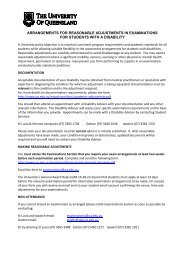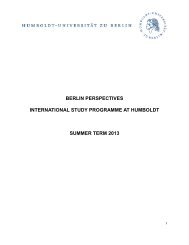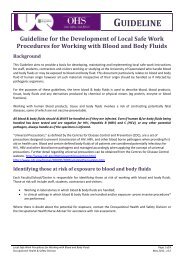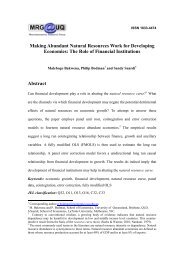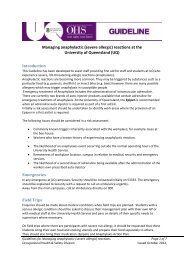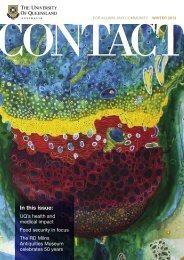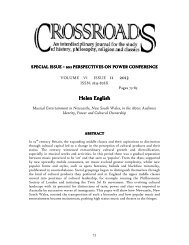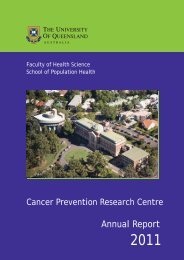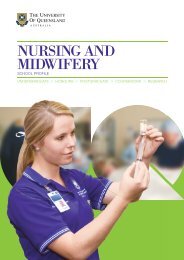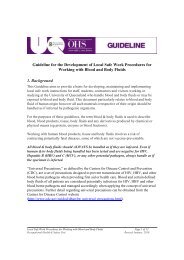Review of the Social Capital Literature - University of Queensland
Review of the Social Capital Literature - University of Queensland
Review of the Social Capital Literature - University of Queensland
You also want an ePaper? Increase the reach of your titles
YUMPU automatically turns print PDFs into web optimized ePapers that Google loves.
importance, with findings suggesting correlations between higher levels <strong>of</strong> socialcapital and low levels <strong>of</strong> school drop-out, lower truancy rates and higher levels <strong>of</strong>academic achievement.4.1.1 Dropping Out <strong>of</strong> SchoolSeveral studies have added to <strong>the</strong> evidence on <strong>the</strong> correlation between highlevels <strong>of</strong> social capital and low drop-out rates. Teachman et al (1996), focusingupon family social capital, look at its effect on students who drop out between <strong>the</strong>8 th and 10 th grade. They use a number <strong>of</strong> detailed measures <strong>of</strong> social capital, andcriticise Coleman for reliance upon what <strong>the</strong>y perceive to be relatively simplemeasures (Teachman, Paasch et al. 1996: 775). These include a range <strong>of</strong>measures <strong>of</strong> family structure (series <strong>of</strong> questions concerning livingarrangements), attendance at a Catholic school, whe<strong>the</strong>r parents know <strong>the</strong>parents <strong>of</strong> children’s closest school friends, <strong>the</strong> number <strong>of</strong> times a child haschanged schools, parent-child interaction and parent-school interaction. Theresults showed that changing school was particularly detrimental in terms <strong>of</strong>dropping out <strong>of</strong> school. Interpreting <strong>the</strong>se results within a social capitalframework, Teachman et al assume that ‘changing schools reduces <strong>the</strong> ability <strong>of</strong>parents and children to make wise decisions about schooling’ (Teachman,Paasch et al. 1996: 782). Teachers may be less committed to children who havemoved, and children may feel separated from <strong>the</strong> education process.In a later study, <strong>the</strong> same authors examine whe<strong>the</strong>r social capital interacts with<strong>the</strong> human and financial capital possessed by parents to produce human capitalin children (Teachman, Paasch et al. 1997). Expanding on <strong>the</strong> measures usedpreviously, three indirect general measures <strong>of</strong> social capital are included; familystructure (for family social capital), attendance at a Catholic high school (tomeasure social capital resulting from ties with <strong>the</strong> large community, assumed tobe greater within a Catholic community), and <strong>the</strong> number <strong>of</strong> times <strong>the</strong> child haschanged schools (as this represents disruption in relations between parents,children and parents). Also included are more specific social capital measuresused previously, tapping schooling-related patterns <strong>of</strong> social relationships. Theseinclude a measure <strong>of</strong> whe<strong>the</strong>r parents know <strong>the</strong> parents <strong>of</strong> <strong>the</strong>ir child’s closestschool friends, and <strong>the</strong> intensity <strong>of</strong> schooling-related interaction between parentsand children and between parents and schools. Responses provided by studentsand parents provided data for <strong>the</strong>se measures, from which five summary indexesfor parent-child interaction and parent-school interaction were produced. Thefindings indicate that both <strong>the</strong> general and more specific measures <strong>of</strong> socialcapital are related to dropping out <strong>of</strong> high school, and also that social capitalinteracts with <strong>the</strong> financial and human capital <strong>of</strong> parents to determine schoolcontinuation.A social capital framework has also been used to assess differences in drop outrates between urban and rural areas. Working directly with Coleman’sconceptualisation <strong>of</strong> family social capital, Lichter looks at whe<strong>the</strong>r differences inFebruary 2001 DRAFT ONLY 17


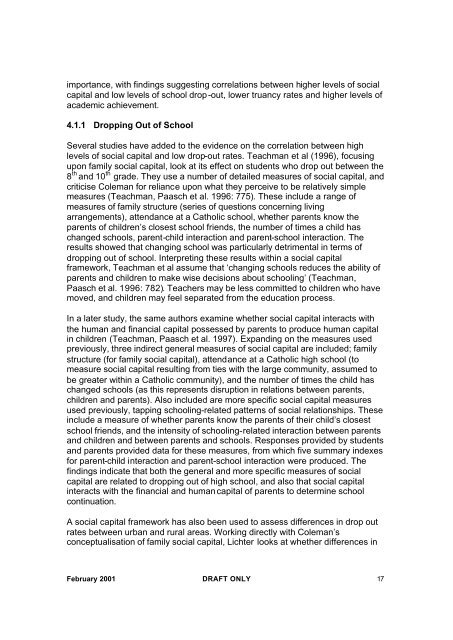

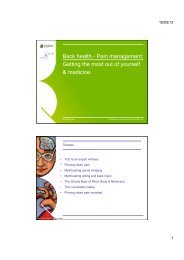
![Recycling [ PDF, 62KB ] - University of Queensland](https://img.yumpu.com/51805185/1/184x260/recycling-pdf-62kb-university-of-queensland.jpg?quality=85)
